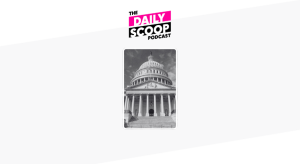- Sponsored
- Tech
Agencies need guide to digital age
Polls show that Americans feel they should get the same level of service from the federal government that they get from tech-centric modern companies like Uber and Amazon. But with decades-old legacy IT environments hamstrung by inefficient procurement, federal agencies working to digitize their enterprise often find themselves lost, overwhelmed and trying to keep up with a slew of new catch phrases and trends.
That’s where consultants like Booz Allen Hamilton’s Strategic Innovation Group say they can help — imbuing agencies with a new mindset focused on speed, modularity and openness, letting them keep up with, or even ahead of, the curve. The company, with over $5 billion in annual revenues, and 95 percent-plus of it from the federal government, will be hosting its Digital Innovation Summit this week, gathering digital leaders from federal government to discuss their best practices in the changing landscape.
“There is this opportunity to really apply new solutions to old problems with maximum speed and agility,” Julie McPherson, senior vice president of the Strategic Innovation Group at Booz Allen, told FedScoop. Created three years ago, Booz Allen’s digital innovation team is focused on helping federal agencies solve their problems through “being open and being agile and thinking at an enterprise perspective,” McPherson said.
But unlike those in the private sector, federal agencies in a less-than-optimal fiscal environment are trying to escape billion-dollar legacy systems while moving to modern, digital IT infrastructures without any downtime or extra budget.
“Many of the problems our government clients are focused on are largely because the infrastructure and the problems have been so tightly coupled and connected, it has been really hard, if not impossible, to transform or evolve a legacy infrastructure without untangling everything you have,” she said.
That’s not to mention the added difficulty that comes with dizzying new technologies that seem to pop up every few years.
“Today, this cloud landscape and this digital ecosystem, whatever you want to call it, is more complex than it’s ever been,” said Munjeet Singh, a vice president of Booz Allen’s Strategic Innovation Group. “They’re trying to get through all the hype. The buzzword bingo out there right now is crazy.”
To deal with those issues, Booz Allen has been leading federal clients to build smaller, more modular and quicker than ever.
“At the highest level, we’re really about helping them break down their problems into small pieces so they can evolve and iterate much more quickly,” McPherson said.
Singh said the biggest problem is “demystifying” things for clients.
“A lot of times our clients get a laser-focus on the cloud component or the mobile component or how they’re developing applications, but it’s got to be a holistic approach around all these major trends, and sometimes trends that seem like they’re competing against each other,” he said.
McPherson and her colleague, Bill Ott, another vice president of Booz Allen’s Strategic Innovation Group, point to agile, digital teams in government, like the GSA’s 18F, as guiding lights for what agencies can achieve. Ott was particularly impressed by 18F’s forethought to escape traditional federal procurement strategies in its recent Agile Blanket Purchase Agreement contract vehicle.
“We’re really starting to see change around government contracting,” he said. “We would talk digital and agile forever, but then when procurements came out of the government, it was the same old legacy way of procuring IT.”
“It’s so exciting that the government put out a procurement where you didn’t have to write a 100-page document,” McPherson said. “We built software. They evaluated us based off of giving us a challenge, giving us a time frame, and then we built the software.”
Also, the ability to build and buy technology in an iterative manner and openly share that work across the federal enterprise is something the team stressed.
“Nirvana for us is where you can just assemble and reuse from bits and pieces all over the government,” McPherson said. “You don’t have to re-create things time and time again.”
At the end of the day, digital means a lot of things to a lot of different people, Ott said. While the term encompasses a long list of corresponding concepts like DevOps, agile and continuous delivery, he said engaging and serving the citizen should be the No. 1 goal for agencies transitioning to digital.
“Digital to me is all about creating products and services that people get excited to use and that they get engaged with … products that wow,” Ott said.
Ott, McPherson and Singh will all be on hand Wednesday during the Digital Innovation Summit, exploring what agencies can look forward to in coming years, whether they’re looking to improve citizen services, better enable their workforce or support the warfighter of tomorrow.
“This is going to bring in the top leaders across federal government who are in digital, and I’m really excited to hear how some of the agencies and organizations achieved digital successes and overcome some of the inherent barriers, and then what’s next, what are they focused on,” Ott said.
Singh reiterated that point: “We’re not going to be there marketing Booz Allen capabilities. That’s the last goal and objective of this. We’re going to be there giving no-kidding best practices and lessons learned of people who have implemented certain components of digital in their agencies over the past couple years.”






